-
Posts
1,933 -
Joined
-
Last visited
Content Type
Profiles
Forums
Gallery
Events
Posts posted by tlevine
-
-
Fantastic as always. The taper at the ends of the straps ads to the realism.
-
Juergen and John, thanks for you comments. Thanks to everyone for the likes as well. The one thing I have found since putting in the quarter deck clamps is how much stiffer the aft timbers are. Considering the number of times I have broken that assembly that means the clamps would have prevented the damage or the damage would have been a whole lot worse than it usually was.

-
Not much progress to show over the last few weeks. Spring has finally arrived so the model does not get as much attention as it desires.
I decided to install the string at the waist and the forecastle and quarter deck clamps. The string at the waist is a single row of planking with its lower surface forming the top of the gun port and its upper surface forming the top of the bulwark. It continues fore as the forecastle clamp and aft as the lower quarter deck clamp. Hook scarves are used throughout. The apparent decorative element at the fore end of the quarter deck clamp will actually be used to help lock in the spirketing.
The upper quarter deck clamp has simple butt joints. In the pictures is appears that the lower edge of the string overhangs the gun port. It actually is flush with the top of the port.
I encountered two problems. First, I measured the height of the clamp at the stem incorrectly and had to replace it. On the picture you can see a faint pencil line indicating where the clamp was originally positioned. The second problem has the potential to be more serious. I have two rows of planking with the top edge just coming up to the bottom of the aft port opening. David's layout shows the planking runs above the level of the port with a chock connecting the planks fore and aft of the port. At this point it is too late to change the port. I think I measured the port height off David's mylar and the clamp height off the NMM plans. Hopefully it will all work out OK. The key is that the top of the opening is below the top of the deck beams.
- robbl, dvm27, paulsutcliffe and 18 others
-
 21
21
-
There is nothing magic about setting only the aft cant frames and then moving to the hawse timbers. The large area of open real estate simply makes it easier to fair the inside of the hull at the extremes. Beautiful work.
- nancysqueaks, Trussben and druxey
-
 3
3
-
Those stanchions are incredible. I will definitely refer to your technique when I eventually get to this point.
-
Robin, you are absolutely right. They are pretty clunky looking. I am not one to put figures on a model. And as you pointed out, my sculpting skills leave a lot to be desired. My intention is to use only the reclining figure. The hammock is under two decks and will barely be seen. This location was deliberately chosen for that very reason. Please keep in mind that the size of these creatures is 1 3/8", so in real life they look much better than in the photo.
Druxey, they were fun but illustrate why I model ships with minimal decoration. Greg, I can only hope to achieve your skill. David, the figures really put the scale of the ship into perspective but one figure is plenty. The joinery is already busy looking and a painted figure detracts from the woodworking, unlike on a completely planked ship where figures could complement the scene. Remco, it is amazing how difficult sculpting is. Someday I hope to concentrate on learing this skill but with only a few hours of modeling time a week I would rather work on the build.
-
I was never happy with Mr. Crispy Toes so I have made two new crew members. Small items, like the head and feet, were added after the torso was baked and then epoxied in place. The captain has prohibitted drinking in bed so I have my sailor sleeping with his hands behind his head. His buddy up top is holding a mug of ale.
- garyshipwright, Kevin, herask and 12 others
-
 15
15
-
Danny, I'll keep that hint in mind for the future. David, Mark, Michael thanks for looking in. Grant, all I kept thinking was how pathetic my one sailor looked compared with Doris's masterpieces. Later in the week I will add some details and paint. It looks better in real life than in the pictures but I may end up throwing him out and starting over if I am not satisfied with the end result. One thing I learned from this is to add small pieces (like feet) after the main body has been baked.
-
OK, here we go with my interpretation of hammocks. Remco, I'm glad you are so far ahead of me so I don't embarrass myself attempting to duplicate your hammocks!
First of all, I had no idea how the hammocks were designed. I found some pictures and sketches on the web to guide me. The hammocks are a regulation six feet long. I made mine three feet wide. Multiple cords (nettles) are sewn to the hammock and end in a ring. A lanyard then extends from the ring to the batten and then doubles back and is secured proximal to the ring. The right hand picture actually shows the hammock suspended from battens on the far side of the beam. The drawing in TFFM suggests they are suspended from the near side of the beam, so I used that interpretation.
The next problem was materials. After some experimentation, I decided to use 2 ply of Kleenex impregnated with dilute yellow glue. The look was initially too shiny but after rewetting a few times and rubbing them down the final look is one of used canvas. I added ten nettles per side and secured them on the underside with an additional single ply strip of Kleenex. I used an unblackened brass ring to secure the nettles. I was afraid the blackening would rub off with all of the handling. I used the finest thread I had available (No. 100 Cordonet) for the nettles, but they are too heavy appearing. The lanyard is No.30 Cordonet.
Now comes the "interesting" part. I like to think I am a pretty decent surgeon. Surgery is easy compared to sculpting. I made my sailor out of Sculpy. He is 5'6" tall. When I baked him he got a little burnt. I guess I won't have to paint any brown shoes on him.
 I am not home this week and so he won't be painted until next week. I moistened one of the hammocks and wrapped it around my sailor so it would look like he was laying in the hammock. The other two hammocks will be shown trussed. These were also moistened to that they could be folded. After the folds had dried, the hammocks were trussed.
I am not home this week and so he won't be painted until next week. I moistened one of the hammocks and wrapped it around my sailor so it would look like he was laying in the hammock. The other two hammocks will be shown trussed. These were also moistened to that they could be folded. After the folds had dried, the hammocks were trussed.I tried to hang the hammocks as depicted in the drawing but simply could not get the thread tied proximal to the ring. So I tied the hammocks off to the batten. I removed two ledges to gain access to the area. They have been temporarily replaced for the picture.
- gjdale, aykutansin, mtaylor and 9 others
-
 12
12
-
-
Thanks gentlemen. And thank you all for the likes. Druxey, you want hammocks, too?
-
Because of the server issue I went back and checked all of the photos in the build log. It was necessary to repost about a dozen pictures.
I have made and installed the hammock battens. These are pieces of tooth shaped wood that attach to the beams just under the carlings. Their function is to provide a hook to secure the hammocks. I first made several strips of wood the correct dimension (2" x 3") and glued them together. I set the height of the blade on the table saw to the depth of the notch and sawed all of the strips simultaneously. The distance between the teeth is 12". The piece was then put into a bottle of isopropanol and the individual pieces separated from each other after several minutes. The interior and exterior edges were rounded off with files. The nails attaching the batten to the beam were simulated with an awl highlighted with pencil. I decided to only place these on the starboard side since I have not yet decided how much decking I will install on the port side.
I have also finished the upper row of planks for the aft bulkheads. They now extend to just below the beams.
-
Gorgeous as always, Remco.
-
I am not usually a sail person because of their tendency to overwhelm the model. However, the sails on your model look really sharp. Congratulations on a lovely build.
-
Thank you, gentlemen, and thanks everyone for the likes. Greg, you mean there is a platform down there? All kidding aside, even though it is very difficult so see into the bowels of the ship, it was definitely worth installing. First, it gave me a better appreciation of the construction of these ships as well as the tight quarters endured by the men. On a more practical level, it gave me the chance to improve my woodworking skills where the mistakes will not be as noticeable.
- mtaylor, Trussben, paulsutcliffe and 3 others
-
 6
6
-
Thanks, Grant. David, it is an app on my phone. It's a freebie called Bubble. You have to calibrate it first with a known level surface but then it works great.
-
Druxey and David, thanks. The only thing I could think of as I finished the deck was...thank god this isn't a frigate!
I deferred making any of the items that attach on to the upper deck (except for the fore and main mast partners) until the entire deck was completed. Now it is time for some small projects which will vastly improve the monotony of the appearance of beams and scantlings. The first thing made was the capstan step. The shape of the step varied among the Swan class ships. In TFFM, David shows a three piece rectangular step. Atalanta has a tear-drop shaped step. At this point I was still psyched from finishing the deck, so I forgot to take pictures of the step fabrication. The step is made of three pieces of wood rabbeted together. The inner piece was 14" thick and the outer pieces were 10" thick. The edge of the 14" thick wood was highlighted on both sides with archival ink. The top of the step is flat, stands 7" proud of the beam and is parallel to the waterline, not to the deck. There is a hole in the middle for the capstan post. The step is secured to the beams and carlings with bolts.
The mizzen partner is a simple plank, in contrast to the complex structures of the fore and main partners. The most difficult part is placing the hole in the correct location because of the rake of the mizzen mast. I do not plan on masting and rigging Atalanta so I took the location of the opening off the plan rather than make a dummy mast.
- Dan Vadas, garyshipwright, Kevin and 18 others
-
 21
21
-
I have finally finished the upper deck framing. The first three photos show the deck before final fairing. The last two are after everything has been sanded down. I started with 100 grit and progressively sanded down to 400 grit. I finished with a razor blade scraper. There was a slight hump in beam 20 which was corrected with the sanding.
- Elmer Cornish, druxey, herask and 13 others
-
 16
16
-
-
I used flat white enamel to touch up the transom edging. Hold off until you are ready to mast her so you won't need to repeat the paint work. Then I covered the frieze with a matte clear finish to prevent future fading of the ink.
-
Druxey, the counter timbers are safe (so far). David, I've seen your hands! But even my fingers are too large for some of these spaces so I do most of the fine work with needle holders and jeweler's forceps. A needle holder is similar to a hemostat but it has no deep ridges and the joint is much closer to the tip.
Ed, I did just as you suggested a few frames forward but these beams are too short to spring them sufficiently. It is almost as easy to temporarily glue the knees to the beams in situ, mark their positions, debond, rebuild off the model to drill bolt holes and re-install using the bolt holes as a guide.
Ben and David, thanks for looking in.
-
Ed, Nils, John and Ben thank you. Hope to have some more progress this weekend.
What I am discovering is that fitting everything together in these last few beam sets is a logistical challange. Because the hull is tapering, I can no longer slide a beam/knee assembly in to place. Right now the best sequence is of construction is beam-carlings-ledges (to stabilize the carlings and prevent lateral shift)-hanging knees-lodging knees. For final gluing, the lodging knees should be installed before the hanging knees. Finally, the ledges between the outer carlings and the lodging knees are installed.
-
Thank you Druxey and thanks everyone for the Likes. The rest of the lodging knees have been cut out and I hope to get a few sets of hanging knees installed this weekend.
-
It has been a few weeks since the last update. Not that much has been accomplished because of that four letter word...work. I have all of the carlings temporarily installed, as well as the ledges between the carlings. I am still adjusting the height of the last two deck beams. The transom knee was made overly thick and now the top of the beams is lower than the top of the knee. The knee will be sanded down once I am happy with the fair run of the deck. Beam set 16 is completed. Only six more beams to go! The bracing across the outer counter timbers has been removed for the pictures. I decided not to build any more structures that stand proud of the deck until the deck is completed and sanded fair. The main mast partner kept getting bumped when I was truing the middle part of the deck. This should make sanding easier.


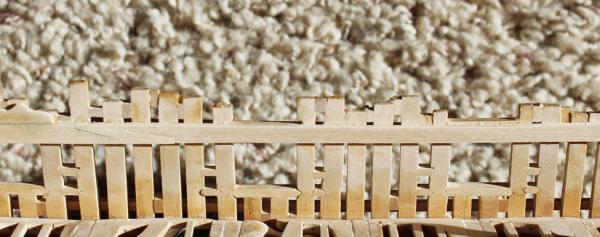
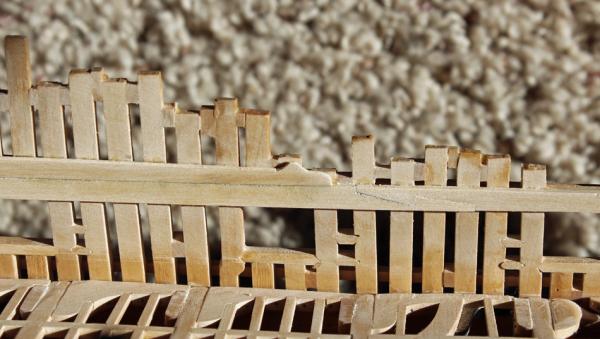
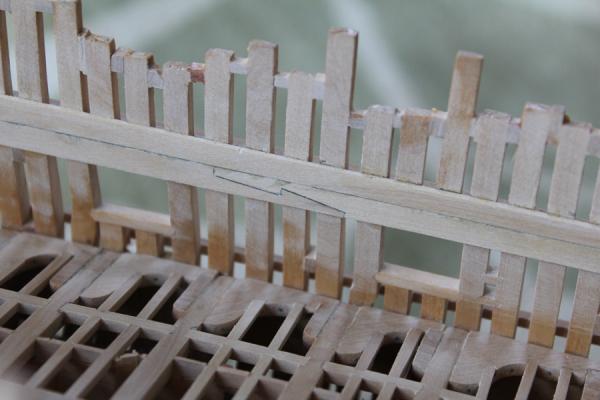
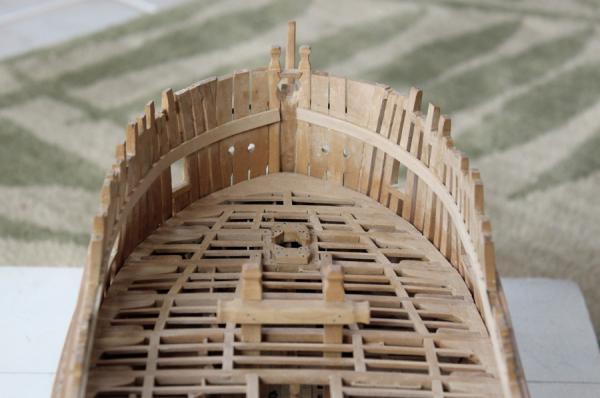
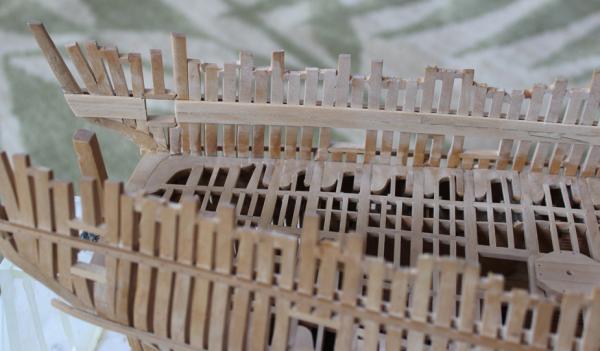
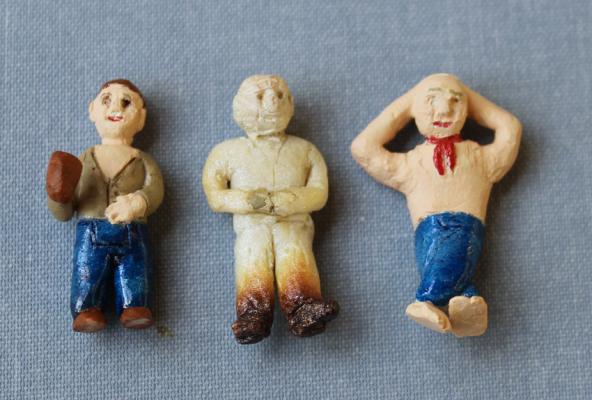
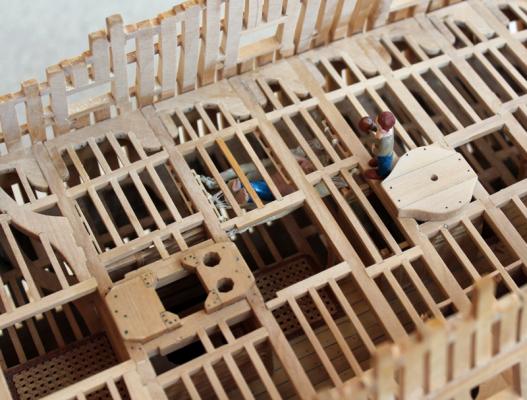
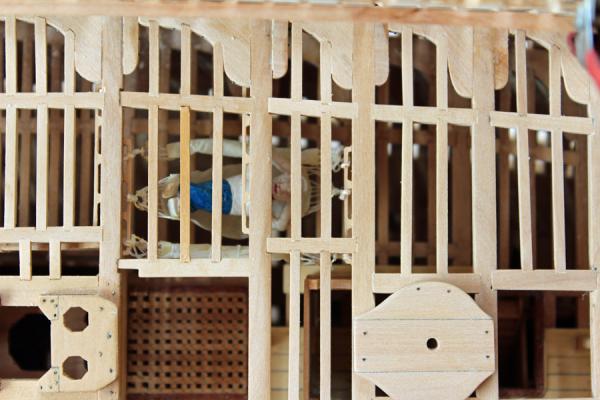
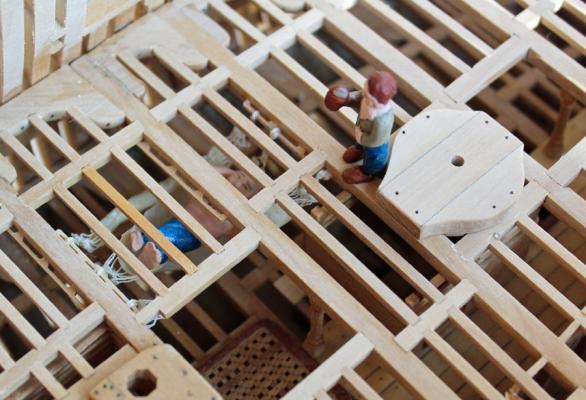
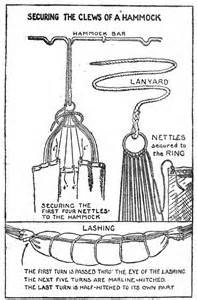
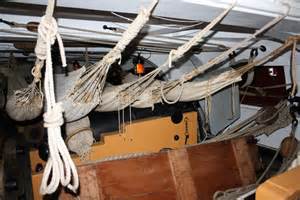
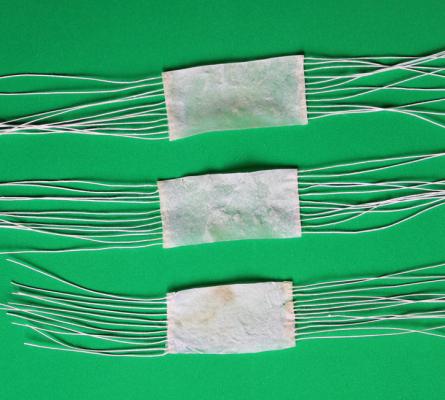
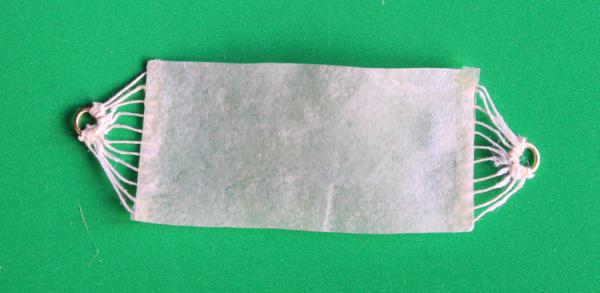
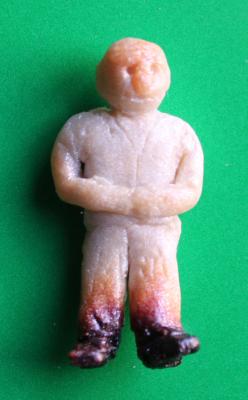
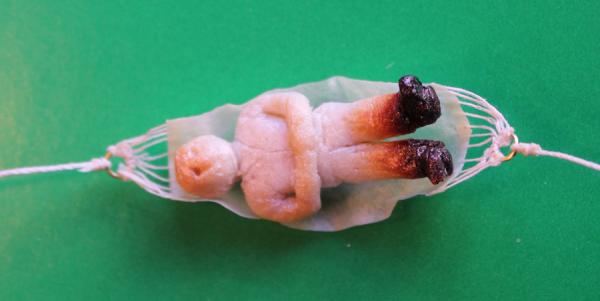
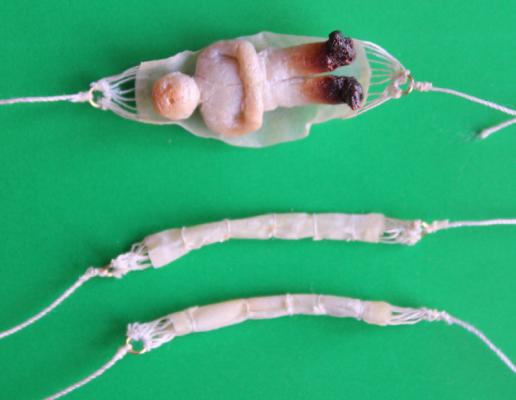
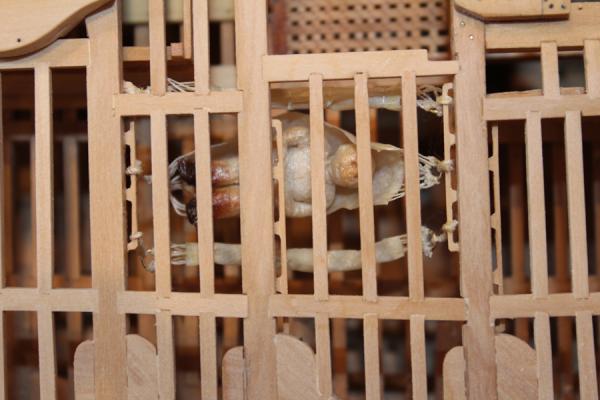
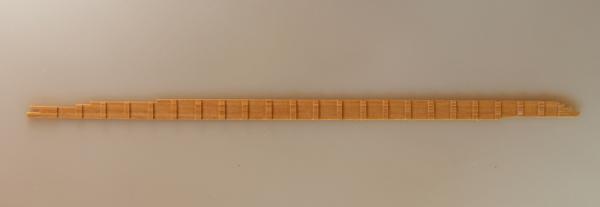
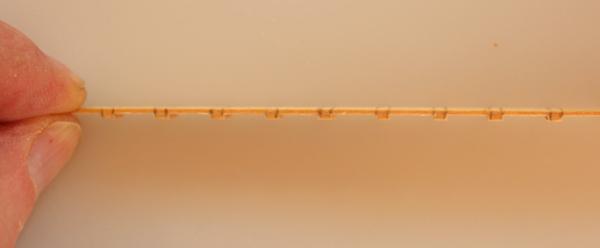
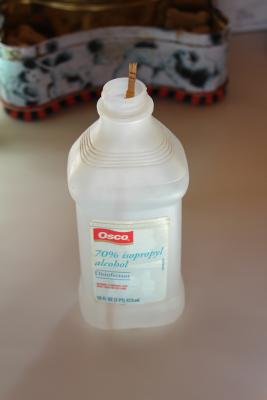
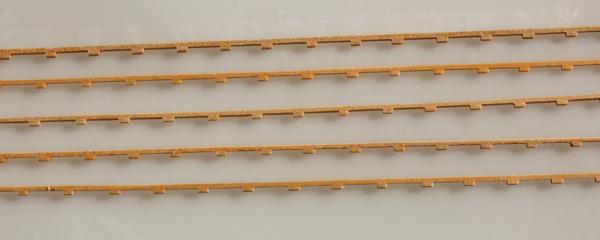
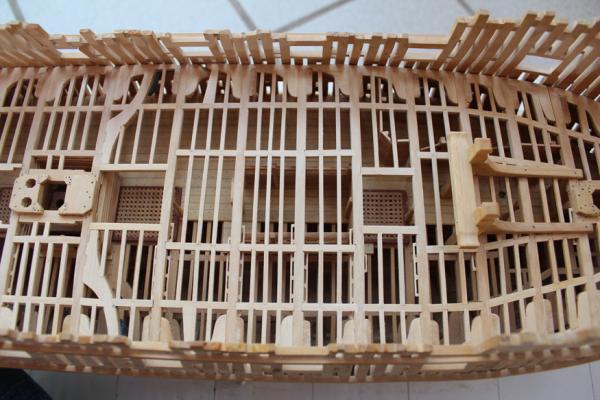
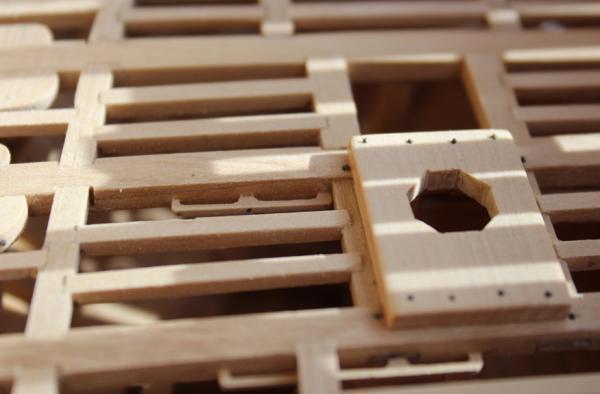
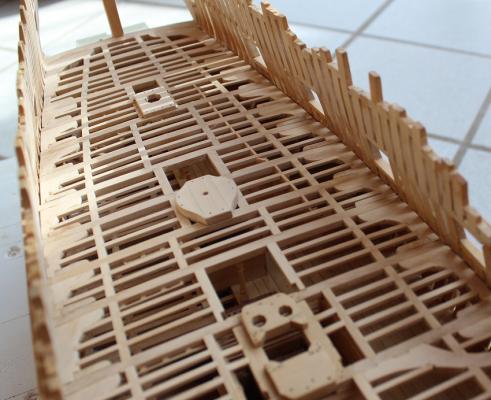
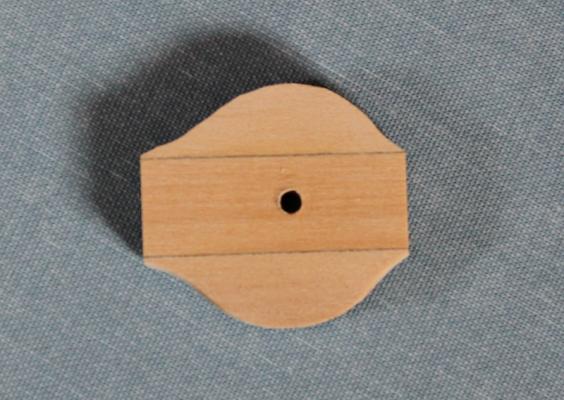
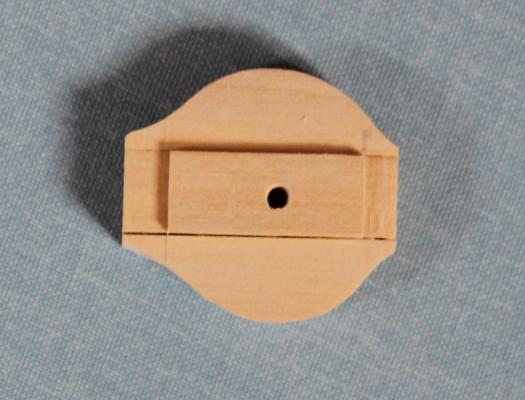
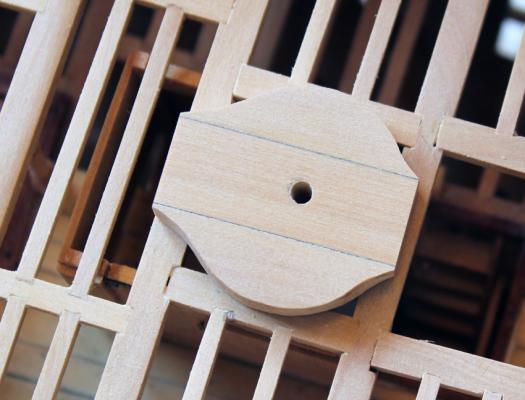
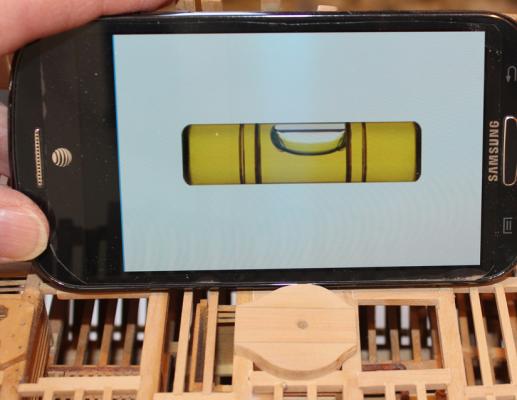
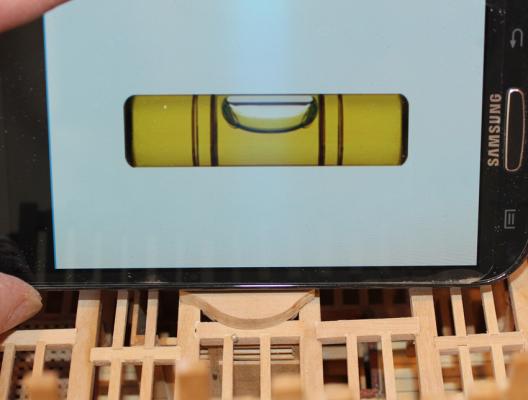
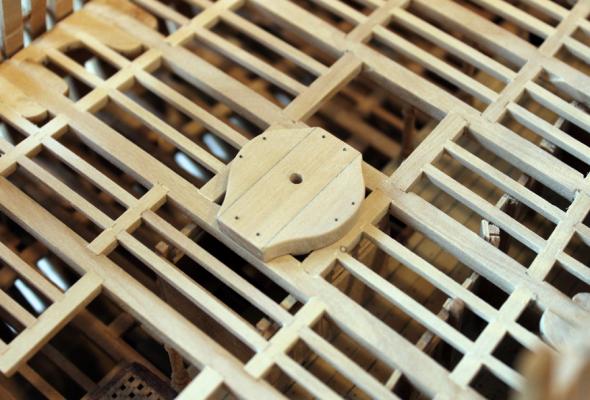
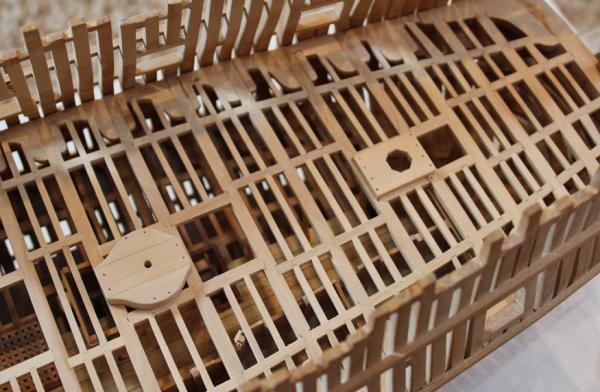
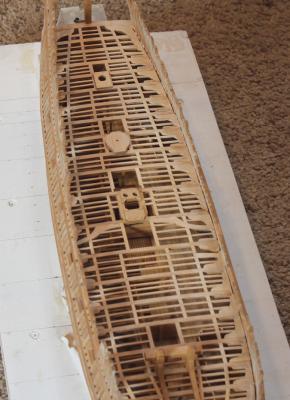
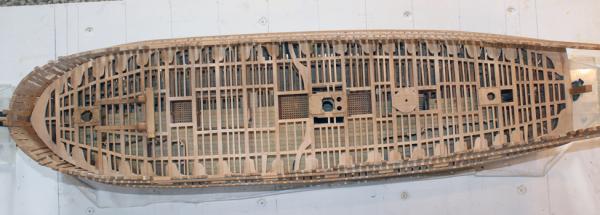
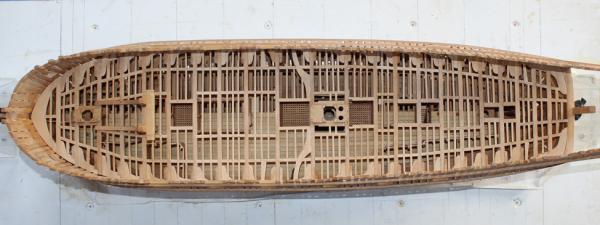
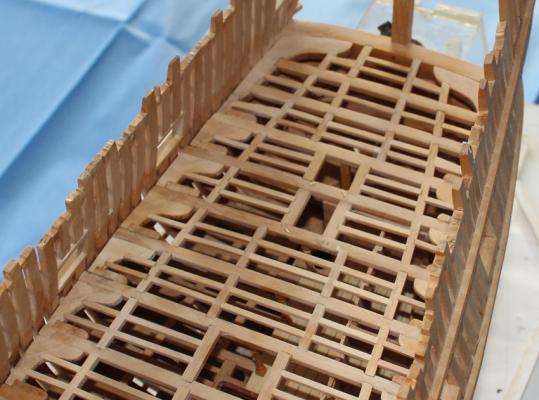

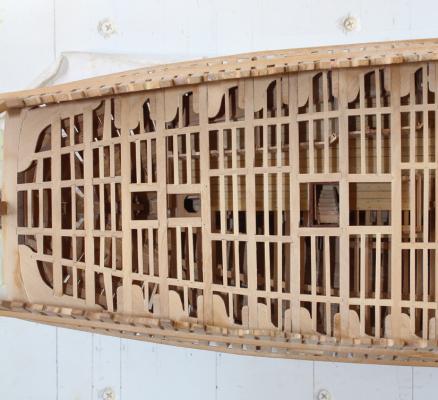
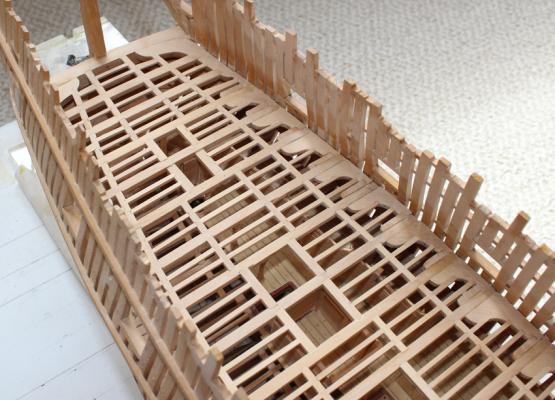
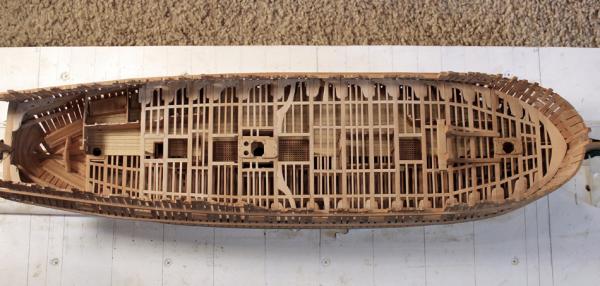
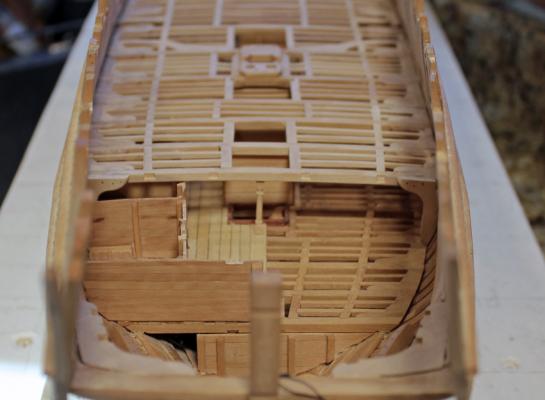
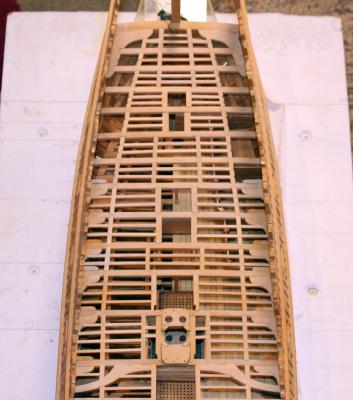
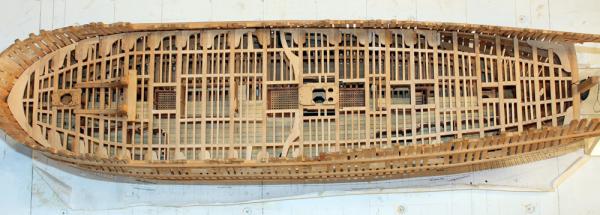
HMS Vulture 1776 by Dan Vadas - FINISHED - 1:48 scale - 16-gun Swan-class sloop from TFFM plans
in - Build logs for subjects built 1751 - 1800
Posted
Great to see another update. Visually, the rail really pulls it all together.